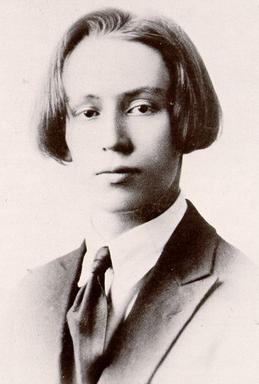Ervin Nyiregyházi facts for kids
Ervin Nyiregyházi (born January 19, 1903, in Budapest, Hungary – died April 8, 1987, in Los Angeles, USA) was a Hungarian-American pianist and composer. He was known for his very unique playing style. Some people thought his style was like the old Romantic pianists, such as Franz Liszt. Critics had very different opinions about his music. After playing many concerts in the 1920s, he became less famous. But he briefly became well-known again in the 1970s.
Contents
A Young Musical Genius
Ervin Nyiregyházi was a true child prodigy, meaning he had amazing talents from a very young age. From ages six to twelve, a psychologist named Géza Révész studied him. Révész even wrote a book about Ervin's incredible musical abilities.
Ervin's father, Ignácz, was a singer. He was very supportive of Ervin's musical gifts. Ignácz said that Ervin tried to sing before he was one year old. He could play tunes correctly on a mouth-organ by age three. By age seven, Ervin could identify any musical note or chord he heard. He was known for his deep musical feeling as much as his playing skill.
Ervin's mother, Mária, wanted him to become a concert pianist to earn money. She pushed him to study popular piano pieces. Ervin later decided to go his own way and stopped following his mother's wishes.
Early Concerts and Strong Opinions
Ervin studied music with famous teachers like Ernő Dohnányi and Frederic Lamond. When he was just 15, he played Liszt's Piano Concerto in A major with the Berlin Philharmonic orchestra. This was a huge achievement for a young musician.
His first concert in America at Carnegie Hall in 1920 caused a lot of talk. Music critics had very different ideas about his playing.
- Richard Aldrich from the New York Times said Ervin had "brilliant technical equipment" and "great strength." But he also felt Ervin's ideas about famous piano songs were "erratic and misleading."
- H. T. Finck of the Evening Post liked Ervin's "originality." However, he thought Ervin ignored what the composers wanted.
- Olin Downes from the Boston Post called Ervin a "phenomenal performer." He praised Ervin's "sincerity, conviction and faith."
Years later, in 1935, the famous composer Arnold Schoenberg wrote about Ervin. Schoenberg said he had "never heard such a pianist before." He found Ervin's playing to have incredible "power of expression." Schoenberg noted that Ervin's music sometimes seemed to lose its shape, but then "surprisingly regains its form." He also said the sound Ervin got from the piano was "unheard of."
Life Away from the Spotlight
In 1925, Ervin had a legal dispute with his concert manager. He lost the case, and after that, it was hard for him to find concert work. He also preferred to play his own versions of orchestra and opera music. He did not like to play the same pieces as other pianists. Because of this, his concert career seemed to end early.
Ervin was married many times during his life. He often faced financial difficulties, even sleeping in subways at times.
In 1928, Ervin moved to Los Angeles. He worked for a film studio, playing piano music for movies. Sometimes, his hands were even shown playing the piano in films like A Song to Remember and Song of Love. He became friends with actors like Bela Lugosi and Gloria Swanson. However, he struggled to manage his money and career choices.
In 1946, he gave a very unusual concert. He was called "Mr. X" and played while wearing a black silk hood. Even with the hood, some listeners recognized his unique piano sound. For about 40 years, he did not even own a piano.
A Brief Return to Fame
In the early 1970s, Ervin started performing again. This led to new recordings being made in 1974 and 1978. These recordings were released on albums between 1977 and 1979. This brought Ervin Nyiregyházi back into public attention for a short time. One album, which featured only Liszt's music, won an award in 1978.
Once again, critics had very different reactions to his recordings.
- Some thought he sounded like a real 19th-century pianist. One critic even wondered if Franz Liszt had "reincarnated."
- Others said his playing was "incredibly slipshod" and "ridiculously amateurish." They also noted his "glacial tempos," meaning he played very slowly.
In 1978, he was offered concerts at Carnegie Hall again, but he said no. His last public performances were in Japan in 1980 and 1982.
Ervin was also a composer. He wrote many pieces in a Romantic style, similar to Liszt's music. He often composed about things that happened in his life. His works had interesting titles like It’s Nice to be Soused and Vanishing Hope. Only a few of his compositions have been published or performed.
Later Life and Legacy
Ervin Nyiregyházi passed away in 1987 from colon cancer. He was buried in Forest Lawn Memorial Park in Glendale, California.
Ervin Nyiregyházi was one of the first child prodigy musicians to be studied seriously. Because of this, he is one of the best-documented musical geniuses in history. In 2007, a book about his life called Lost Genius was published by Kevin Bazzana.
Recordings
Some of Ervin Nyiregyházi's recordings, including live concerts, are available on CD. You can find them on labels like VAI, Music and Arts, and Sonetto Classics.
Discography
- Nyiregyhazi Plays Liszt (Desmar/International Piano Archives IPA 111, Telefunken 6.42626, 1977)
- Nyiregyhazi: All Liszt Program (Columbia M2-34598, 1978)
- Nyiregyhazi: Tchaikovsky, Grieg, Bortkiewicz, Blanchet (Columbia M-35125, 1979)
- Nyiregyhazi: At the Opera (VAI/IPA 1003 VAI Audio TT 55.29, without date)
Images for kids



